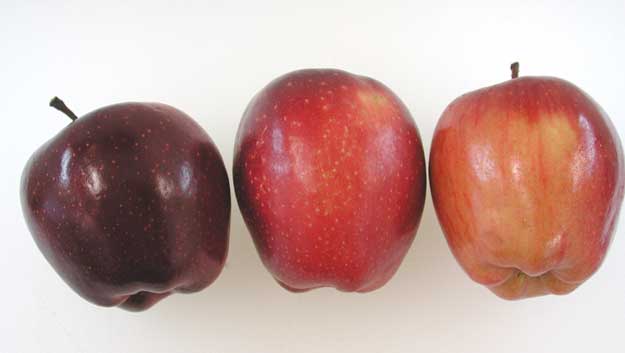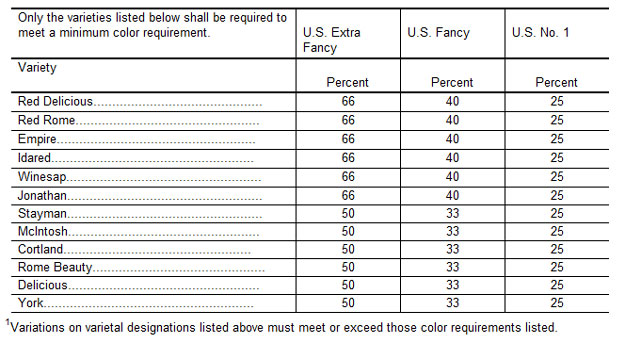With all the varieties of apples on the market, you may think it would be confusing to determine if the apples you are packing or receiving are making the US Grade Standards. Let’s take a look at Red Delicious, for example. If the Red Delicious are packed to meeting the US Extra Fancy Grade, the apples must have a minimum of 66% of the surface being a good red color. If the Red Delicious are packed to meeting the US Fancy Grade the apples must have a minimum of 40% of the surface being a good red color. If the apple does not meet this requirement, then that apple would be a quality defect, and would be scored against the 10% defect tolerance.

From the image above you see three Red Delicious apples. The two apples on the left both are considered as having good red color. As long as over 66% of the surface is showing the good red color, the apples are not a defect. The apple on the right is not considered as being good red color. Some of the surface is showing some good red color, but the rest of the apple only has a light red color, what the USDA refers to as compensating color. It takes twice as much compensating color to equal good red color. In other words, if an apples is showing 100% of the surface with light red color, or compensating color, then that apples is considered as having 50% good red color. The USDA does supply visual aids depicting what is considered as good red color and what is considered as compensating color.
Easy right? Not so fast. As you have noticed there are many popular varieties on the market. Fujis, Braeburns, Galas, Jonagolds, Honeycrisps are common today. The USDA Grade Standards for Apples do not include any color requirements for these varieties. No color requirements means the apples may have; no good red color, just a blush, or maybe 75% could have good red color, none of which would be a defect of any grades.
Although we don’t see too many Idareds, Staymans or Yorks on the market, the USDA has included color requirements on these varieties for the industry to follow. The following chart displays the varieties that do have minimum color requirements and the amount of color required to meet the respective grade.


No Comments on “Apples- Undercolor”